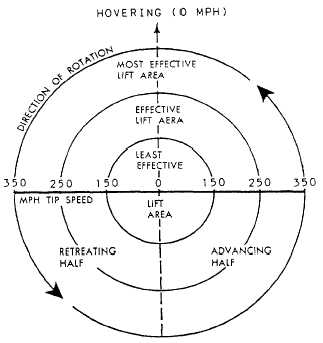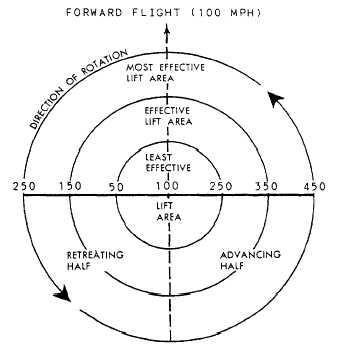|
BLADE FLAPPING Blades attached to the rotor hub by horizontal hinges
permit the blade to move vertically. The blades
actually flap up and down as they rotate. The hinge
permits an advancing blade to rise, thus reducing
its effective lift area. It also allows a retreating
blade to settle, which increases its effective lift
area. Decreasing lift on the advancing blade and increasing
lift on the retreating blade equalizes the lift over
the rotor disc halves.
Blade flapping creates an unbalanced condition resulting
in vibration. To prevent this vibration, a drag
hinge allows the blades to move back and forth in
a horizontal plane. A main rotor that permits individual
movement of the blades in both a vertical and
horizontal plane is known as an "articulated rotor."
CONING
Coning is the upward bending of the blades caused
by the combined forces of lift and centrifugal force.
Before takeoff, centrifugal force causes the blades
to rotate in a plane nearly perpendicular to the

Figure 10-3.Symmetry of lift.
rotor hub. During a vertical liftoff, the blades assume a
conical path as a result of centrifugal force acting outward
and lift acting upward. Coning causes rotor blades
to bend up in a semirigid rotor. In an articulated
rotor, the blades move to an upward angle through
movement about the flapping hinges.

Figure
10-4.Dissymmentry of lift.
|
|

